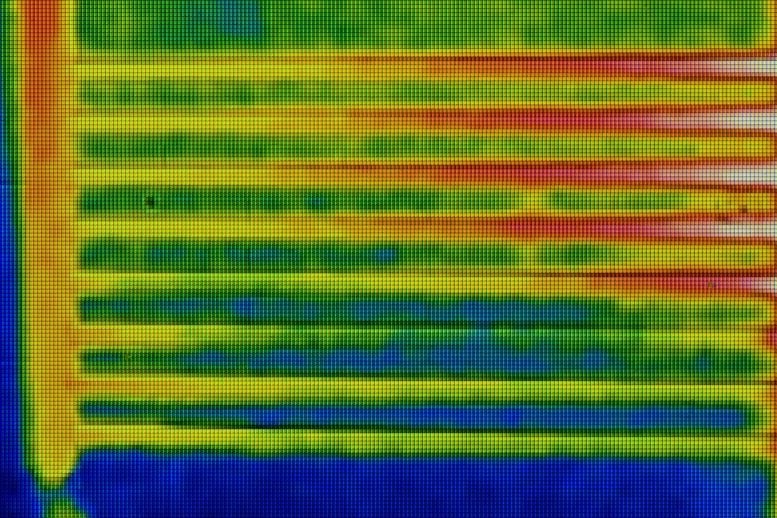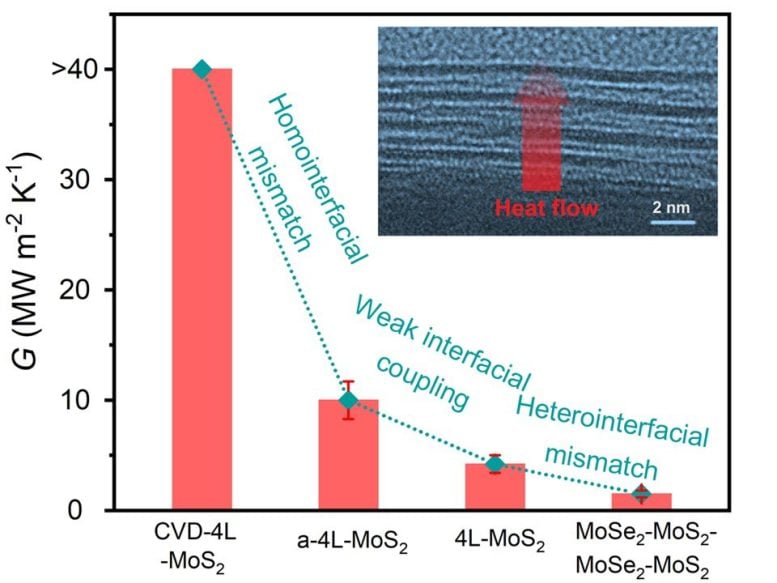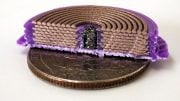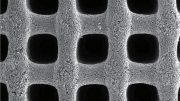
Researchers have found new ways to control heat flow in thin materials by stacking atomically thin layers of atoms into van der Waals heterostructures. The weak coupling and mismatch between layers helped significantly reduce heat transport.
Heterostructures of atomically thin layers help control heat transfer.
Researchers from Tokyo Metropolitan University have found new ways of controlling how heat flows through thin materials by stacking atomically thin layers of atoms into van der Waals heterostructures. By comparing different stacks of different materials, or even the same material after heat treatment, they found that weak coupling and mismatch between layers helped significantly reduce heat transport. Their finding promises sensitive control of heat flow at the nanoscale in thermoelectric devices.
Heat is everywhere, and it flows. We’re witness to it every day, when we touch a cold door handle, see ice melting, or put a pot on a stove. Heat in the wrong places can also be damaging. Examples include overheating electronics, as microchips produce more heat than they can move away while they carry out intensive computational tasks. This can damage or severely reduce the lifetime of electronic devices, making control of heat flow at the nanoscale a pressing concern for modern society.

Different levels of heat transfer are found in layers formed (from left to right) by chemical vapor deposition, annealed weakly bound layers, weakly bound layers, and alternating layers made of two different materials. (inset) Electron microscopy image of the cross-section of a typical 4L structure. Credit: Tokyo Metropolitan University
A team led by Professor Kazuhiro Yanagi of Tokyo Metropolitan University has been working on ways to produce and handle ultrathin layers of a class of materials known as transition metal dichalcogenides. Here, they took layers of molybdenum disulfide and molybdenum diselenide a single atom thick, and stacked them together into layers of four (4L films). The layers could be coupled together in different ways. The team’s unique, gentle way of transferring large single atom-thin sheets allowed them to create stacks of layers bound together by van der Waals forces. They could also be strongly bound by more conventional techniques, specifically chemical vapor deposition (CVD). This gives rise to a number of permutations for how isolated layers could be put together, and potentially control how heat gets through them.
By using a special coating technique, they were able to detect how minuscule amounts of heat flowed past these stacks with rather good accuracy. Firstly, they found that layers strongly bound by CVD let through significantly more heat than their loosely bound counterparts. This effect could be partially reversed by annealing weakly held layers, making the binding stronger and improving upon the transport of heat. Furthermore, they compared stacks of four molybdenum sulfide layers to a “lasagna”-like structure made of alternating layers of molybdenum sulfide and molybdenum selenide. Such heterostructures had an artificial structural mismatch between adjacent layers of atoms which led to significantly lower levels of heat transfer, more than ten times less than with strongly bound layers.
The team’s findings not only demonstrate a new technical development but provide general design rules on how one might control how heat flows at the nanoscale, whether you want more or less flow. These insights will lead to the development of ultrathin, ultralight insulators as well as new thermoelectric materials, where heat might be effectively channeled for conversion into electricity.
Reference: “Control of Thermal Conductance across Vertically Stacked Two-Dimensional van der Waals Materials via Interfacial Engineering” by Wenyu Yuan, Kan Ueji, Takashi Yagi, Takahiko Endo, Hong En Lim, Yasumitsu Miyata, Yohei Yomogida and Kazuhiro Yanagi, 29 September 2021, ACS Nano.
DOI: 10.1021/acsnano.1c03822
This work was supported by JSPS KAKENHI Grants-in-Aid of Scientific Research (JP17H06124, JP17H01069, JP18H01816, JP20H02573, JP19K15393, and JP18H01832), and JST CREST Program Grants (JPMJCR17I5, JPMJCR16F3, JPMJCR17I2).








Be the first to comment on "Atomic Scale “Lasagna” Controls Heat Flow at the Nanoscale"